| View previous topic :: View next topic |
| Author |
Message |
Duncan Miller

Joined: 25 Apr 2009
Posts: 138
Location: South Africa



|
 Posted: Sep 23, 2014 03:57 Post subject: Formation of 'blue lace agate' Posted: Sep 23, 2014 03:57 Post subject: Formation of 'blue lace agate' |
|
|
Jo Wicht and I have been puzzling about the formation of so-called 'blue lace agate' from southern Namibia. It is associated with what looks like a mixed breccia, so presumably formed in a fault zone. There are layers and chunks of green calcite, surrounded by the botryoidal blue banded cryptocrystalline quartz, which often has a rough 'outer' surface covered with trigonal points. First, what is the crystallisation sequence, from the calcite 'cores' outwards to the points, or the other way around? Second, what are the trigonal points? Are they pseudomorphs of vanished fluorite originally lining a cavity, as suggested by Justin Zzyxx in a short description in The-Vug(dot)com Quarterly V4#4 pp. 27-28? If so, what is the granular 'brecciated core' and how did it get there? (A description of the relationships in the field would help, but I have not been able to find a published account by a geologist who actually has visited the location.)
| Mineral: | "Blue lace" agate |
| Locality: | | Namibia |  |
|
| Description: |
| Breccia "core"; green calcite; blue lace layers |
|
| Viewed: |
38881 Time(s) |
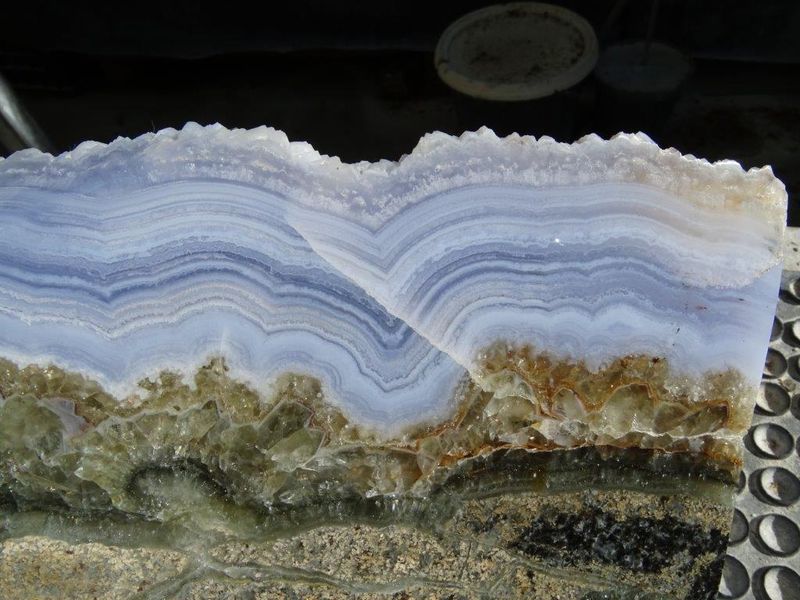
|
| Mineral: | "Blue lace" agate |
| Locality: | | Namibia |  |
|
| Description: |
| Breccia "core"; green calcite; blue lace layers |
|
| Viewed: |
38871 Time(s) |
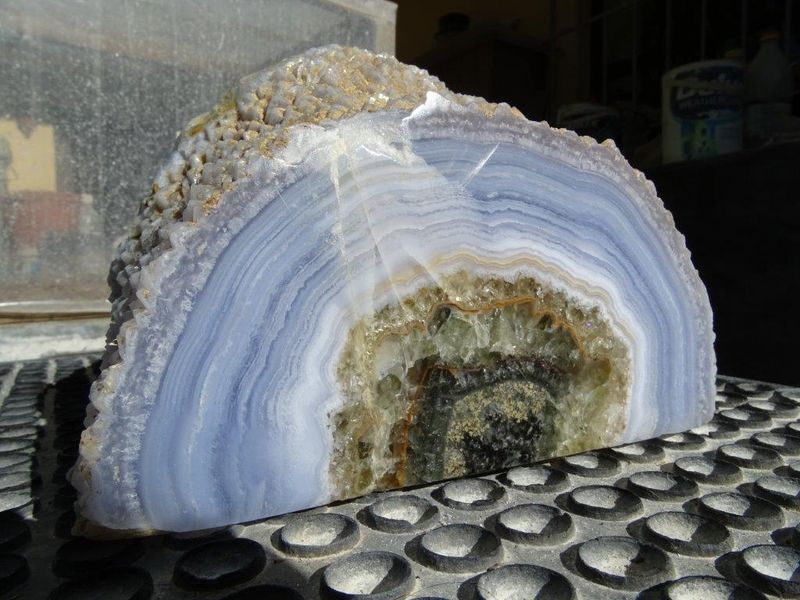
|
| Mineral: | "Blue lace" agate |
| Locality: | | Namibia |  |
|
| Description: |
| Trigonal points on "surface" |
|
| Viewed: |
38864 Time(s) |
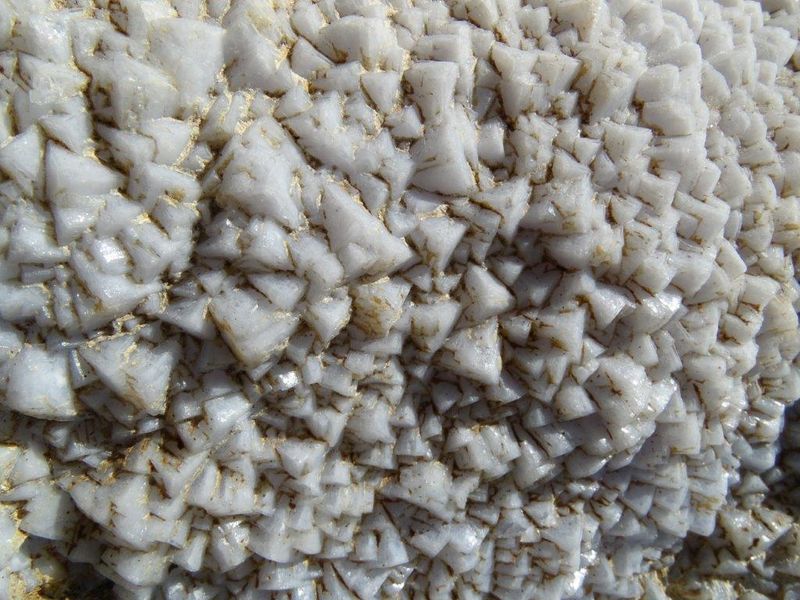
|
|
|
| Back to top |
|
 |
Riccardo Modanesi
Joined: 07 Nov 2011
Posts: 631
Location: Milano


|
 Posted: Sep 23, 2014 05:03 Post subject: Re: Formation of 'blue lace agate' Posted: Sep 23, 2014 05:03 Post subject: Re: Formation of 'blue lace agate' |
|
|
Hi Xenolithos!
This gemstone is very common: it's chalcedony, i.e. microcrystals of quartz. But you know better than myself agate, chalcedony, quartz, chrysoprase etc. are the same mineral specie. The pale blue chalcedony is quite common in the Whole Southern Africa, not only in South Africa and Namibia!
Greetings from Italy by Riccardo.
_________________
Hi! I'm a collector of minerals since 1973 and a gemmologist. On Summer I always visit mines and quarries all over Europe looking for minerals! Ok, there is time to tell you much much more! Greetings from Italy by Riccardo. |
|
| Back to top |
|
 |
marco campos-venuti

Joined: 09 Apr 2014
Posts: 234
Location: Sevilla



|
 Posted: Sep 23, 2014 10:15 Post subject: Re: Formation of 'blue lace agate' Posted: Sep 23, 2014 10:15 Post subject: Re: Formation of 'blue lace agate' |
|
|
The formation of lace agates is due to 2 different hydrothermal systems. We talked about in the post: "Endomorph or Pseudomorph?"
One system is responsible of a low temperature minerals as calcite, quartz, Baryte, fluorite, stibnite, orpiment, etc. that alternate with the banded chalcedony.
In your case the calcite is at the base and possibly at the top. When the agate forming hydrothermal systems come back, the calcite is quite unstable and is easily pseudomorphosed by chalcedony.
I add two more examples of blue lace. They are not so common, just few in the world of nice color.
| Mineral: | Chalcedony pseudo on fluorite |
| Locality: | | Trestia, Deva, Hunedoara, Romania |  |
|
| Description: |
|
| Viewed: |
38831 Time(s) |
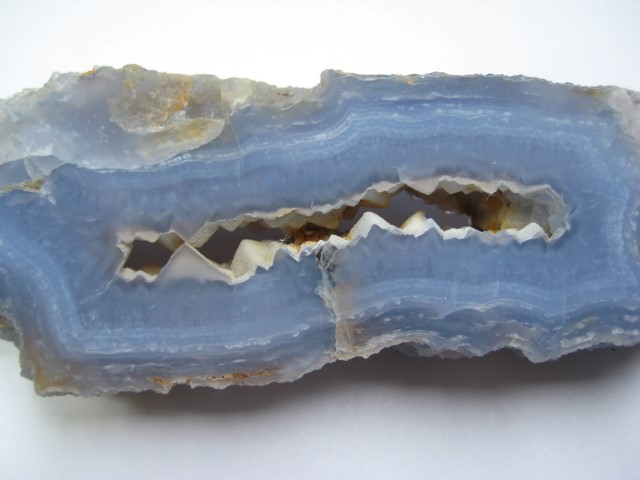
|
| Mineral: | Sowbelly agate |
| Locality: | | Last Chance Mine, Amethyst Vein, Creede District, Mineral County, Colorado, USA |  |
|
| Description: |
| Chalcedony alternated with amethyst quartz. |
|
| Viewed: |
39984 Time(s) |
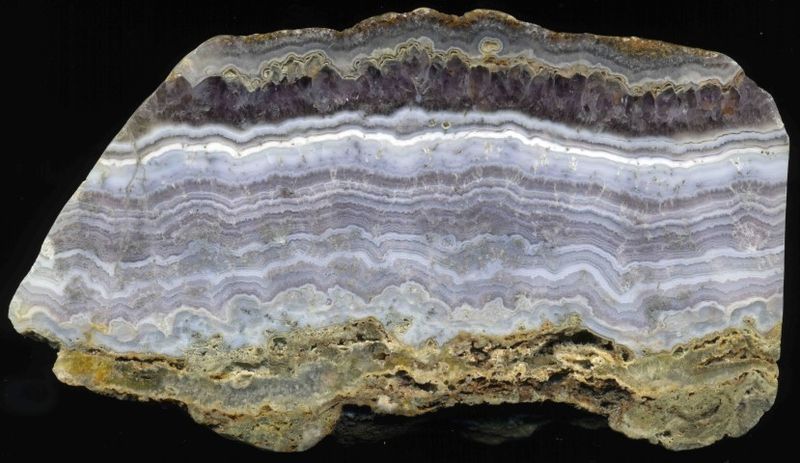
|
|
|
| Back to top |
|
 |
Pete Modreski
Site Admin

Joined: 30 Jul 2007
Posts: 710
Location: Denver, Colorado



|
 Posted: Sep 23, 2014 11:35 Post subject: Re: Formation of 'blue lace agate' Posted: Sep 23, 2014 11:35 Post subject: Re: Formation of 'blue lace agate' |
|
|
| This all sounds good--different fluids succeeding one another, brecciation (can happen more than once at different times)... but I think the exact understand of the trigonal-appearing crystal forms is still a puzzle. In the case of Creede sowbelly agate, it's easy, they are macro size quartz crystals. There isn't necessarily one sequence of minerals or replacements that applies to every such banded agate. And of course, I don't think (?) anyone has a clear answer as to why some of this agate is blue--presumably, scattering of light by inclusions of a certain size range--and inclusions composed of, who knows what?
|
|
| Back to top |
|
 |
Duncan Miller

Joined: 25 Apr 2009
Posts: 138
Location: South Africa



|
 Posted: Sep 24, 2014 02:13 Post subject: Re: Formation of 'blue lace agate' Posted: Sep 24, 2014 02:13 Post subject: Re: Formation of 'blue lace agate' |
|
|
Thanks for the replies so far. Marco - You made a good point that there can be multiple phases of deposition and dissolution in a hydrothermal system, which makes interpretation of the sequence difficult. Here is another photograph, showing an exposed botryoidal surface underneath the outer layer containing what may be endomorphs of something (fluorite?, pseudocubic calcite?, halite???) formerly filling the cavity now occupied by the banded chalcedony. If former fluorite or calcite dissolved, why are there still crystalline calcite layers conformable with the innermost bands of the blue chalcedony? Still puzzled.
(I should have mentioned that all the blue lace photographs I have posted were taken by Jo Wicht.)
| Mineral: | "Blue lace" agate |
| Locality: | | Namibia |  |
|
| Description: |
| "Blue lace agate" showing botryoidal surface below layer containing trigonal points |
|
| Viewed: |
38664 Time(s) |
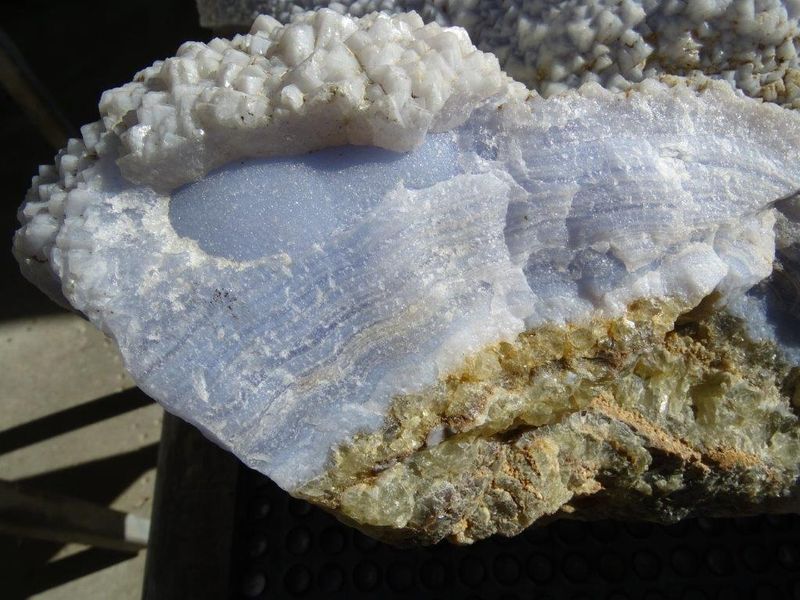
|
|
|
| Back to top |
|
 |
lluis
Joined: 17 Nov 2006
Posts: 719


|
 Posted: Sep 24, 2014 09:58 Post subject: Re: Formation of 'blue lace agate' Posted: Sep 24, 2014 09:58 Post subject: Re: Formation of 'blue lace agate' |
|
|
Hi, Duncan, Pete, Marco, Riccardo, List
For Pete...
I, as you, have no idea of reason of blue colour. If I has been asked before, I would have said traces of copper or cobalt compounds, or maybe any silicate like riebeckite...
Anyway, to know is easy: just some material, dissolved in fluorhidric and an analysis, spectrofotometric. If no material is found, then should be an inclusion or maybe some structural irregularities in layers...
Yes, the "easy" is not that easy... :-(
For how banding appears...
I always have thought that formation of banded agates is a case of chemistry or physics or physicochemical effect...(as you like....I am chemist.... )on gel systems, the so called Liesengang phenomena: any reaction has a banded replica (and also, a rythmic replica) along the media, that is a gel. Very well known... Although I am not sure that there is any explanation (not in my time; just that it worked this way...So, it existed, so any explanation should be there...Which? Any....)
So, banding is Liesengang.
Colour, any reaction/impurity.
Crusts... just that gel reactions are not homogeneous reactions...
To know if pseudo: crushing and analyzing which is any remnant....
With best wishes
Lluís
|
|
| Back to top |
|
 |
Josele

Joined: 10 Apr 2012
Posts: 410
Location: Tarifa, Spain



|
 Posted: Sep 24, 2014 11:25 Post subject: Re: Formation of 'blue lace agate' Posted: Sep 24, 2014 11:25 Post subject: Re: Formation of 'blue lace agate' |
|
|
I was thinking agate banding is not related with Liesegang rings but with changes in the hydrothermal solution which provokes a growth in layers of different characteristics.
_________________
Josele |
|
| Back to top |
|
 |
lluis
Joined: 17 Nov 2006
Posts: 719


|
 Posted: Sep 24, 2014 13:02 Post subject: Re: Formation of 'blue lace agate' Posted: Sep 24, 2014 13:02 Post subject: Re: Formation of 'blue lace agate' |
|
|
Hi, Josele
Well, chemists are an odd pack, I know (it is said to me so many times... :-) ), but I have always read that agate banding is a Liesengang phenomena....
Yes, it depends in how you accept that agates are formed...
If you accept the theory I always have read that are gel portions that slowly dehidrated, Liesengang works well.
Changes in effluent, well, physically have a lot of troubles....Not exactly if we refer to stalagtites. Then, changes in temperature and effluent, by sure.
Just what I have read and what I think that fits well among what is seen and what we know, being easy ...
With best wishes
Lluís
|
|
| Back to top |
|
 |
marco campos-venuti

Joined: 09 Apr 2014
Posts: 234
Location: Sevilla



|
 Posted: Sep 24, 2014 14:09 Post subject: Re: Formation of 'blue lace agate' Posted: Sep 24, 2014 14:09 Post subject: Re: Formation of 'blue lace agate' |
|
|
The theory that agates are Liesegang ring is a German idea, but is absolutely no realistic for many reasons. The first is that Liesegang banding is a postdepositional phenomena in a solid media (gel) and the banding in agate is a mix of different stuff including a gelly chalcedony, a fibrous and solid chalcedony and a crystalline quartz. A similar phenomena to Liesegang is know in geology to form color iron banding in tuffaceous rocks like the famous rocks of Petra. Liesegang exist in some agates and in some jaspers, but is a very rare phenomena of very little importance.
| Description: |
| Liesegang Rings at Bouddi National Park, New South Wales, Australia |
|
| Viewed: |
39189 Time(s) |
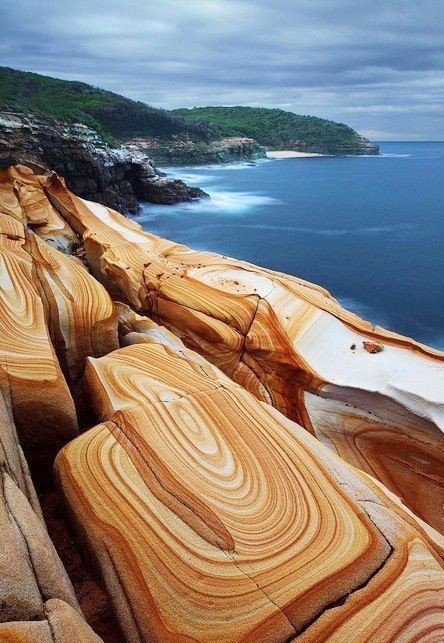
|
|
|
| Back to top |
|
 |
lluis
Joined: 17 Nov 2006
Posts: 719


|
 Posted: Sep 24, 2014 14:31 Post subject: Re: Formation of 'blue lace agate' Posted: Sep 24, 2014 14:31 Post subject: Re: Formation of 'blue lace agate' |
|
|
Hi, Marco
Just chemist, not mineralogist...
But still what I read makes Liesegang very credible to me.
What you say are just possibilities in Liesegang, nothing that is out of it... At least, for what I read and what I understood.
And, really, more understandable to me in a geode that is concentrical...but water effluents could not be concentrical.
With best wishes
Lluís
P.D.: not german, besides... :-)
|
|
| Back to top |
|
 |
Duncan Miller

Joined: 25 Apr 2009
Posts: 138
Location: South Africa



|
 Posted: Sep 25, 2014 03:57 Post subject: Re: Formation of 'blue lace agate' Posted: Sep 25, 2014 03:57 Post subject: Re: Formation of 'blue lace agate' |
|
|
Geology: This is what Ludi von Bezing has to say in his book Namibia about the 'blue lace agate' deposit: "The deposit is a quartz-calcite hydrothermal vein system related to a dolerite sill that is intrusive into the sedimentary rocks of the Karoo-age Whitehill Formation. Gypsum, occasionally as clear crystals, calcite and nontronite form cavity fillings."
Colour: The question of what causes the colour is the same at the question of what causes the colour of other blue chalcedony and also blue quartz grains in some granites. It probably is an example of the Tyndall effect - scattering of light by tiny inclusions (carbon dioxide bubbles?), analogous to the light blue colour of flour suspended in milk.
|
|
| Back to top |
|
 |
marco campos-venuti

Joined: 09 Apr 2014
Posts: 234
Location: Sevilla



|
 Posted: Sep 25, 2014 04:03 Post subject: Re: Formation of 'blue lace agate' Posted: Sep 25, 2014 04:03 Post subject: Re: Formation of 'blue lace agate' |
|
|
| Exact Duncan. The cuprian blue color in chalcedony is an other kind of blue and is called Gem Silica, very rare: Arizona and Peru.
|
|
| Back to top |
|
 |
marco campos-venuti

Joined: 09 Apr 2014
Posts: 234
Location: Sevilla



|
 Posted: Sep 25, 2014 06:19 Post subject: Re: Formation of 'blue lace agate' Posted: Sep 25, 2014 06:19 Post subject: Re: Formation of 'blue lace agate' |
|
|
This is an example on how Liesegang rings work.
| Description: |
|
| Viewed: |
38341 Time(s) |
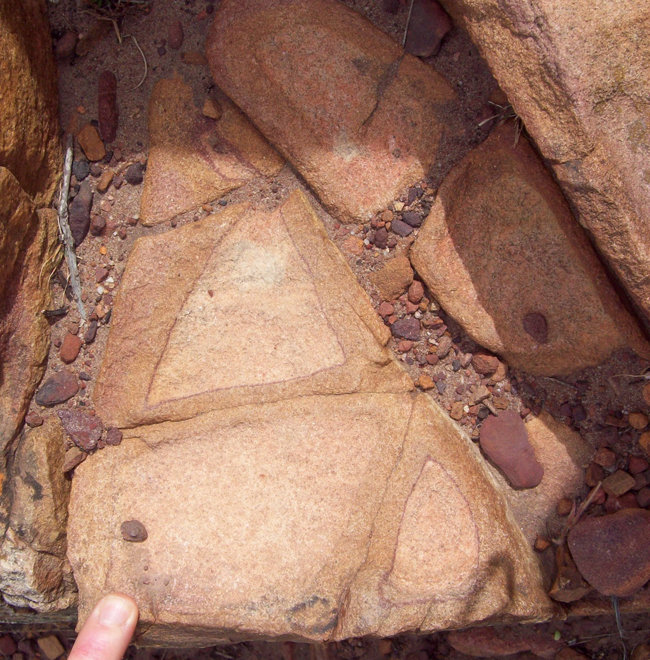
|
| Description: |
|
| Viewed: |
38372 Time(s) |
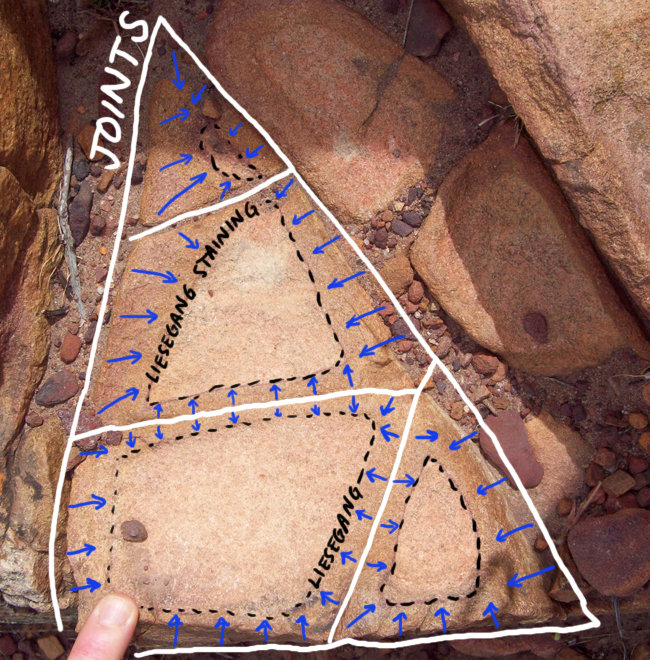
|
|
|
| Back to top |
|
 |
Duncan Miller

Joined: 25 Apr 2009
Posts: 138
Location: South Africa



|
 Posted: Sep 27, 2014 00:29 Post subject: Re: Formation of 'blue lace agate' Posted: Sep 27, 2014 00:29 Post subject: Re: Formation of 'blue lace agate' |
|
|
Jo Wicht has sent me some more photographs of her Namibian 'blue lace agate' collection. In some instances it clearly grew 'inwards' as a lining to a cavity, sometimes containing crystals of other minerals in the residual cavity. Unfortunately this doesn't resolve the question of the trigonal points on many of the pieces which appear to have solid green calcite 'cores' and then layers of 'blue lace' with the possibly endomorphed trigon points on the 'outside'. These trigonal points are quite clearly distinct from the quartz crystal points lining some of the internal cavities (as in many vug-filling agate nodules).
| Locality: | | Namibia |  |
|
| Description: |
|
| Viewed: |
38173 Time(s) |
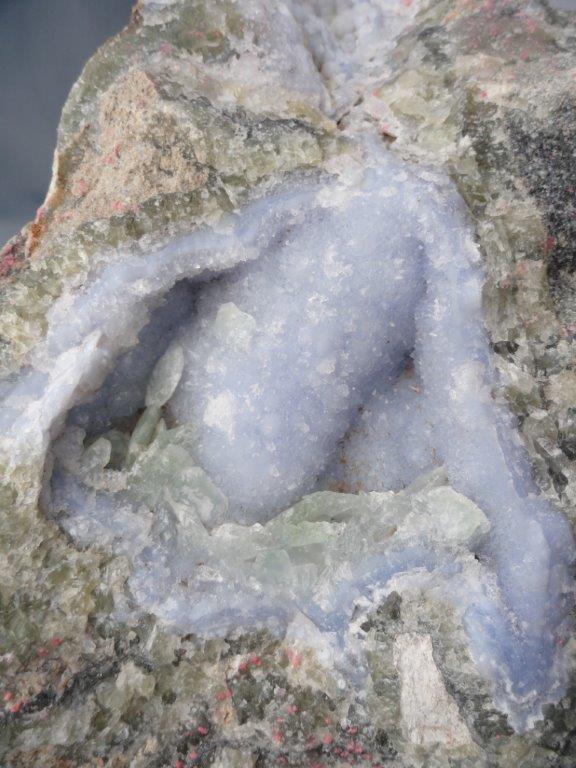
|
| Mineral: | Prehnite |
| Locality: | | Namibia |  |
|
| Description: |
| Prehnite inside a "blue lace" cavity |
|
| Viewed: |
38139 Time(s) |
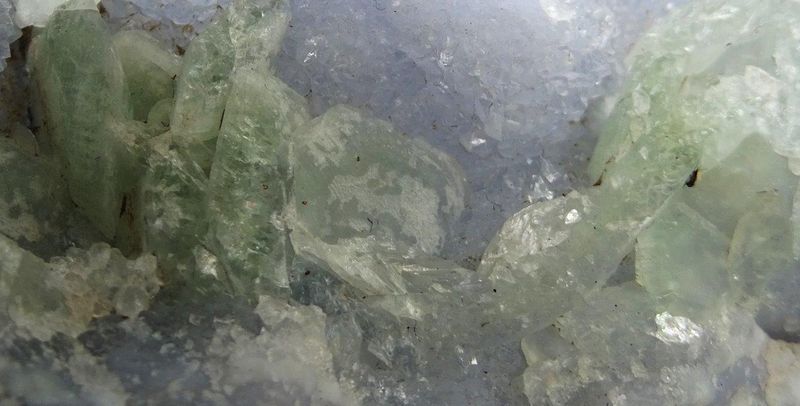
|
| Mineral: | Calcite |
| Locality: | | Namibia |  |
|
| Description: |
| Calcite rhombohedra on brown unidentified (calcite/siderite?) in |
|
| Viewed: |
38147 Time(s) |
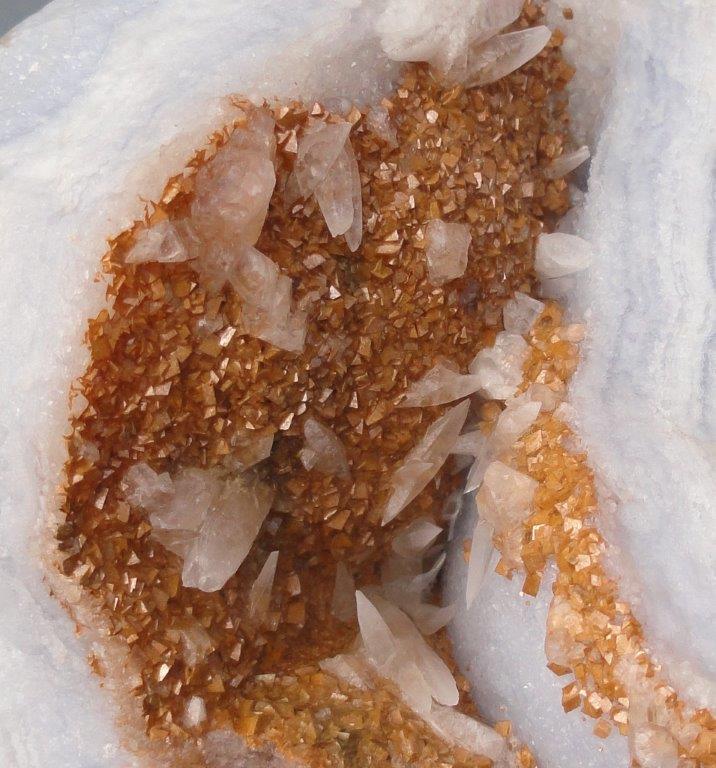
|
|
|
| Back to top |
|
 |
Duncan Miller

Joined: 25 Apr 2009
Posts: 138
Location: South Africa



|
 Posted: Sep 30, 2014 01:09 Post subject: Re: Formation of 'blue lace agate' Posted: Sep 30, 2014 01:09 Post subject: Re: Formation of 'blue lace agate' |
|
|
To add to the puzzling picture of its formation, here is a photograph of one of Jo Wicht's latest blue lace acquisitions - a very large lump displaying trigonal points between two veins of banded blue lace. Partly acid-etched calcite adheres to the outside of the blue lace veins. (Photographed in the throes of being cleaned.)
| Mineral: | 'Blue lace agate' |
| Description: |
| 35 cm long, 24 cm wide and 26 cm at the highest point |
|
| Viewed: |
37929 Time(s) |
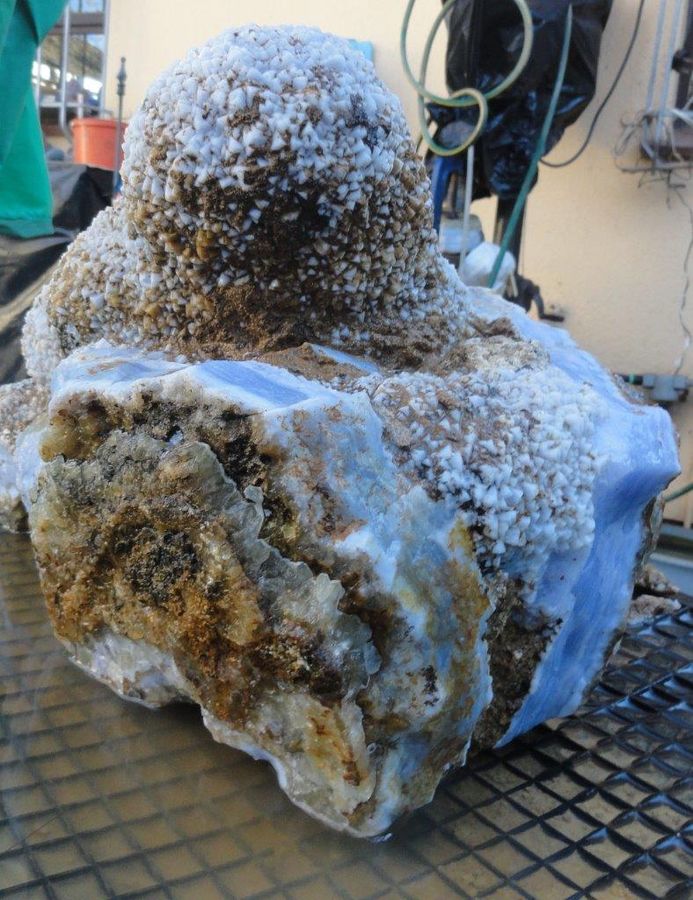
|
|
|
| Back to top |
|
 |
|




